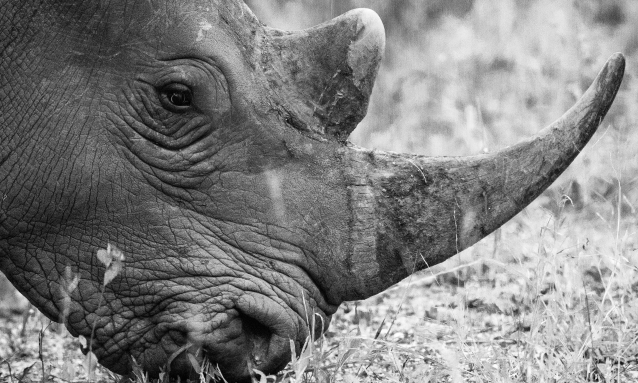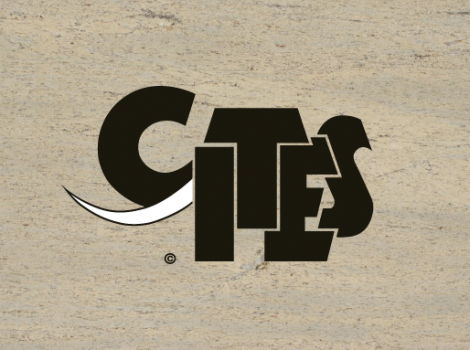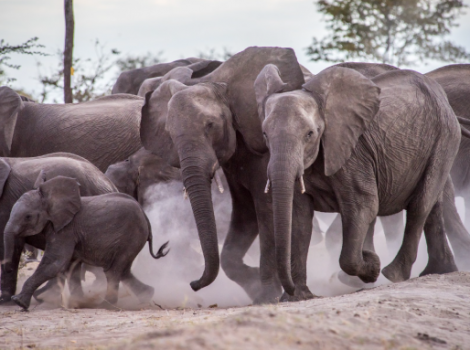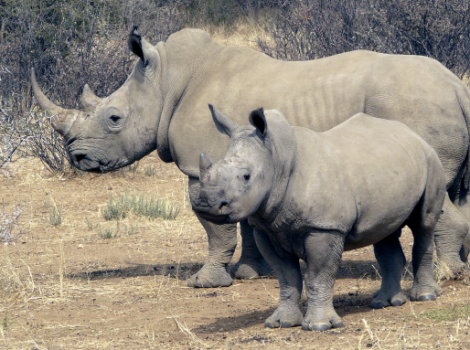
Along with Namibia, Botswana hopes to use proceeds from sale of rhino horn to fund national conservation efforts
Botswana is one of the two countries that have expressed a desire to trade in rhino horn ahead of the November 14-25, 2025 CITES conference of the parties (CoP19). The government, together with that of Namibia, wants to propose that their endangered white rhinos be moved from Appendix I to Appendix II in order for them to cash in on sales.
Appendix I lists species that are the most endangered among Convention on International Trade in Endangered Species of Wild Fauna and Flora (CITES)-listed animals and plants. These are species which are threatened with extinction. CITES prohibits international trade in specimens of these species except when the purpose of the import is not commercial, for instance for scientific research.
Appendix II lists species that are not necessarily now threatened with extinction but that may become so unless trade is closely controlled. Rhinos fall within Appendix II and any trade in their products is prohibited for the two countries. Just like in their proposal for the sale of elephant ivory, both countries have always felt the opening of trade will provide the necessary funds to re-invest in conservation efforts to protect both species.
Trade limitations reduce opportunities to generate much-needed funding for conservation, the two governments have said when making the case for ivory trade. That anti-poaching programmes are expensive, and their long-term effectiveness is threatened by declining government budgets and sources of income.
“The costs of protection have and can be expected to continue escalating, increasingly making white rhinoceros a liability to conservation authorities, private and communal landowners.
Existing benefit streams from tourism, limited trophy hunting and live sales of rhinoceros are not sufficient to offset these security costs,” Namibia has said when motivating for permission to trade.
“The increasing financial burden caused by the increase in the threat of illegal killing needs to be addressed through the sustainable use of white rhinoceros. In order for Namibia’s private sector to be encouraged to participate meaningfully in the conservation of the white rhinoceros, an economically conducive climate needs to be created,” the Namibian government has said.
Botswana is listed alongside Namibia as the two countries expected to seek a waiver at CoP19 in Panama to be allowed to open trade in rhino horns. Botswana has yet to motivate for their stance, making a case for the movement of its rhinos from Appendix I to Appendix II.
Botswana’s poaching rose by more than 100 percent between 2018 and 2021. The country’s rhino population has remained a secret with the government citing “security concerns” when asked to provide the numbers. The Government has also adopted the same policy regarding cases of rhino poaching, choosing to only react to leaks.
On the other hand the white rhinoceros population in Namibia has grown from the initial introduction of 16 animals in 1975 to the current national population of 1237, according to the Government. The growth rate in the population in the period 2002-2021 was 6.7% per annum, including imports from South Africa. The majority of white rhinoceros in Namibia are privately-owned with large numbers imported from South Africa since 2012. The current privately-owned population comprises 952 animals in around 85 populations. The State-owned population in 2021 stood at 285 animals in three protected areas.
“The Namibian white rhinoceros population is secure. The population does not meet the biological criteria for inclusion in Appendix I. The proposed transfer to Appendix II will not threaten the survival of the species in Namibia as the necessary control and enforcement measures are in place and have shown to be relatively successful in curbing illegal killing and illegal trade.
Trade in live animals will only take place for in-situ conservation purposes. Trade in hunting trophies (as is already done) will enable the generation of income for conservation management and rhinoceros protection and also to have more importing States (as there are countries which do not import Appendix I trophies),” the Namibian government has said in its proposal to CITES.
Namibia has an increasing population of white rhinoceros, the second largest population in the world after South Africa. The country says management enables the maintenance of optimal sex ratios, and the maintenance of maximum reproductive carrying capacity to ensure optimal population growth and optimum use of the habitat available to this species.
Botswana will also attempt to seek permission to sell its ivory stockpile later this year. Following its failure to convince CITES at Zimbabwe Elephant Summit in May this year. Botswana and its neighbours (Zimbabwe, South Africa, Namibia, Zambia) will relaunch their campaign at the COP19 in Panama in November.
Their attempt to secure a waiver to sell their ivory was declined by the Convention on International Trade in Endangered Species of Wild Fauna and Flora (CITES) on the basis that legal trade would negatively impact elephant populations and fuel organised criminality. Following the Summit, Botswana and Zimbabwe threatened to quit CITES and explore alternative markets for their ivory.
For the complete article: Source: https://www.independent.co.uk/voices/campaigns/giantsclub/botswana/botswana-seeks-permission-to-trade-in-rhino-horn-b2236952.html



